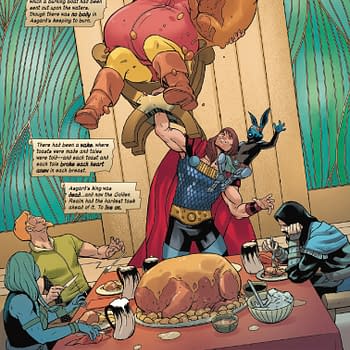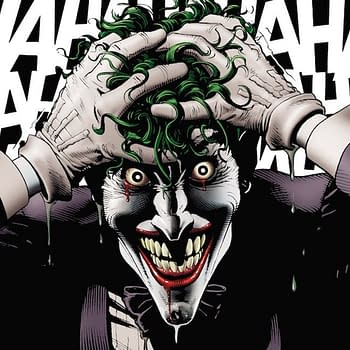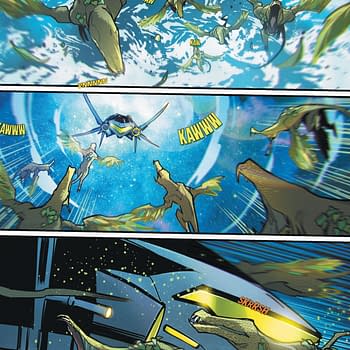Posted in: Comics, Recent Updates | Tagged: Bitch Planet #1, boom studios, Comics, entertainment, Eternal #1, image comics, jeff lemire, kelly sue deconnick, Marvel Comics, matt kindt, The Empty Man #6, The Superior Foes Of Spider-Man #17, The Valiant #1, valiant entertainment
Thor's Comic Review Column – Bitch Planet #1, The Empty Man #6, The Valiant #1, Eternal #1, The Superior Foes Of Spider-Man #17
This Week's Reviews:
Bitch Planet #1
The Empty Man #6
The Valiant #1
Eternal #1
The Superior Foes of Spider-Man #17
Bitch Planet #1 (Image Comics)
By Bart Bishop
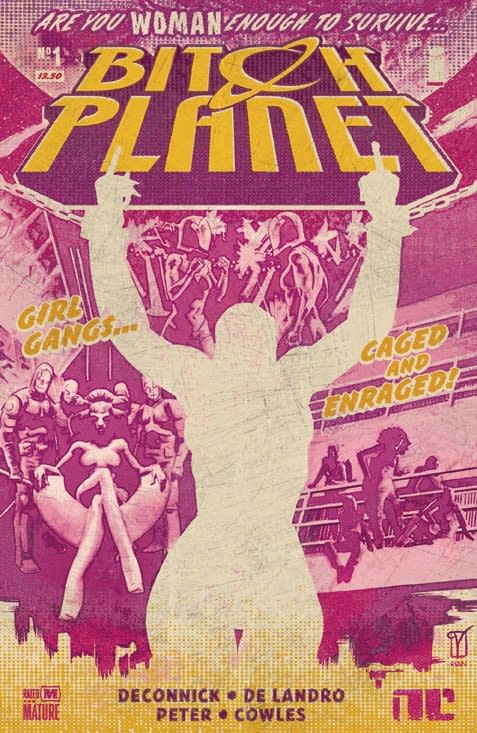
Set in a dystopic future (because is there any other kind?), the Earth and universe have become dominated by men unquestionably. Any woman that is non-compliant is shipped off to Bitch Planet—er, the Auxiliary Compliance Outpost, a planetary prison dominated by armored guards and sexualized mimetic holograms of cultural clichés like "The Catholic", Jim Crows that plays good cop to the prisoners. Here Marian Collins, a housewife that stopped sexually pleasing her husband, finds herself completely out of her element. As Marian pleads her case, the story crosscuts back to Earth where Mr. Collins is attempting to get his wife pardoned. A broad swath of faces and names are breezed through, but it quickly becomes evident that the main characters will be the intimidatingly large Penelope and the woman of mystery, Kamau Kogo, who regardless of the odds still clings to a sense of goodness and sisterly loyalty, and has enough skill and power to make a big first impression.
Everything about this issue feels raw, angry and punk rock. The first few pages declare over the airwaves that the Earth is actually the Father and space is the Mother, a codeswitch that economically shows the prevailing perspective. This is just texture, however, as the setting jumps to Bitch Planet itself where new inmates are being processed, stripped bare from head to toe. It's a telling choice, an in-your-face dare to judge these women by their bodies. DeConnick pulls a bait and switch for those expecting T&A by presenting an ensemble of "normal" women: overweight, tall, toned, scarred, or in Marian Collins's case, older and just plain plain. DeConnick also grounds this in the all-too-familiar, with the scenes of Mr. Collins appealing for his wife's freedom in a mundane office setting, his boundaries composed of a chirpy Stepford Wife-esque secretary and a coldly official bureaucrat. The only problem is she's establishing so much in so little time that the prison characters are a bit thinly drawn as of yet, although I laughed way too hard at Penelope's "Where'm I supposed to put my other tit?" and Kamau certainly is the kind of badass that can cut through the meat of a story like this.
De Landro's art is vibrant and dynamic, heavy with detail and propulsive in its sense of movement and expression. Her style is reminiscent of Stuart Immonen, just this side of boxy cartoon with thick black inking and maximum utilization of silence to speak for itself. Her body types take DeDonnick's ideas and manifest them in refreshing ways, while calling back to a time period known for its hard edged cynicism: the 1970s. These are "Blaxploitation" characters writ large, translated into modern day and layered with more nuance. More impressive is how De Landro handles the subtle racial differences in features, not just skin color, without falling into stereotypes. Kamau in particular, with her breadth of afro and shoulders, isn't a common sight for comics, and the way she jumps into action builds up to a surprise moment that is still unexpected even while being inevitable.
The De's have staked their claim, with DeConnick continuing the promise she's showed with Captain Marvel, but now with the benefit of an R-Rating. That freedom of content allows for a reminder that comics and our world still have a long way to go in terms of diversity and equality, and Bitch Planet promises to confront that uncomfortable truth bravely and bluntly.
Editor and teacher by day, comic book enthusiast by night, Bart has a background in journalism and is not afraid to use it. His first loves were movies and comic books, and although he grew up a Marvel Zombie he's been known to read another company or two. Married and with a baby girl on the way, he sure hopes this whole writing thing makes him independently wealthy someday. Bart can be reached at bishop@mcwoodpub.com.
The Empty Man #6 (of 6)(BOOM Studios, $3.99)
By Graig Kent
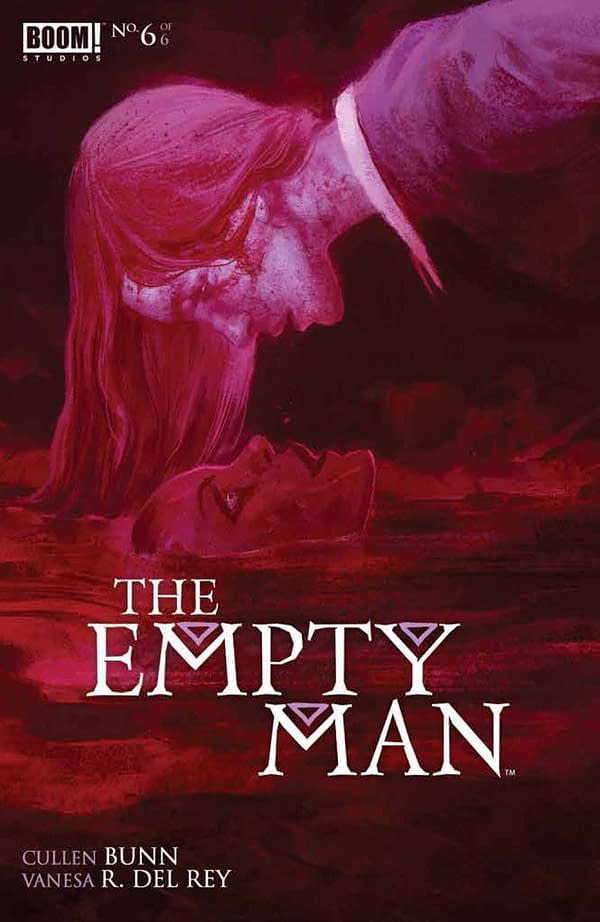
Horror tends to manifest itself into some physical form, creating all manner of boogeymen, be they demented humans or undead creatures, evil spirits or giant rampaging monsters. Most cultures have their fables and legends of evil beings, some embedded within their pantheon, often used as some form of deterrent for unwanted behaviour. It makes sense then that our modern horror icons are similarly mythologised, with elaborate back stories that unfurl across multiple films or novels. But the problem with examining the origins or revealing too much of them as characters is they become diluted, less powerful, less scary. Also with modern horror, all too often these boogeymen have no real purpose, other than to scare the audience.
As Cullen Bunn and Vanesa Del Ray's The Empty Man mini-series closes, I can't help but feel that the horror of this series ends profoundly diluted from where it began. The series started with the world already in the grip of "the empty man" epidemic, an infection of sorts that addles the victim's brain, forcing them to envision all manner of horrors, and ultimately become manic prior self-destructing. The medical community can detect no root cause, nor do they understand how it spreads. Meanwhile two FBI agents, Langford and Jensen, are investigating the disappearance of two children after the death of their parents in an empty man-related incident. This leads them to an empty man-worshipping cult and ultimately to a televangelical church that has prospered in the wake of the empty man epidemic.
The epidemic is a frightening one, again because it's so mysterious. Anyone can seemingly catch it, yet there's no apparent root cause, and definitely no cure. It's a death sentence preceded by madness. Bunn does a good job of showing the impact of this on both the world at large as well as the individual without derailing the main story, with well-constructed background news reports or transition scenes in hospitals and support groups, among his other subtle tricks. By the fourth issue, though, Bunn reveals the source for the empty man epidemic, although not through any of the investigative work of our two lead Feds. They don't really catch up until this final issue. The reveal finds a singular source for the disease, providing both character and motivation. While all the clues are adequately seeded from the start that this is the intended reveal, it demystifies the horror, and leads to some shaky metaphysics that seem out of step with Bunn's established reality.
The series concludes not with any finality for Langford and Jensen, nor with any conclusive resolution for the titular Empty Man, which may imply that Bunn isn't finished exploring the property or characters, but at the same time, I get the feeling that any further exploration would only further demystify and dilute the creepiness and effectivity of the series horror.
Del Ray's art is well suited to the horror genre. She utilizes a heavy, thick brush which obscures finer details in shadows, creating an uneasy murkiness to both natural and surreal settings. She experiments with panel layouts with greater confidence each subsequent issue, culminating with this final issue where she goes all out, structuring her pages using the triangular symbols of evangelical church in the book as inspiration (credit to Ed Dukeshire's lettering that makes progressing through these jagged panels brilliantly logical). While The Empty Man is interesting throughout, it is disappointing that as the storytelling gets bolder the story itself relaxes in its terror.
Graig Kent's first novel, Quarter City,can be read for free on Wattpad. Set in alternate universe,the story is framed around society's reactions to beings with super powers, the extreme actions of the city's most powerful Enhanced in particular. You might like it. Graig tweets stuff @thee_geekent and he does various other things in other places.
The Valiant #1 ($3.99, Valiant)
By D.S. Randlett (@dsrandlett)
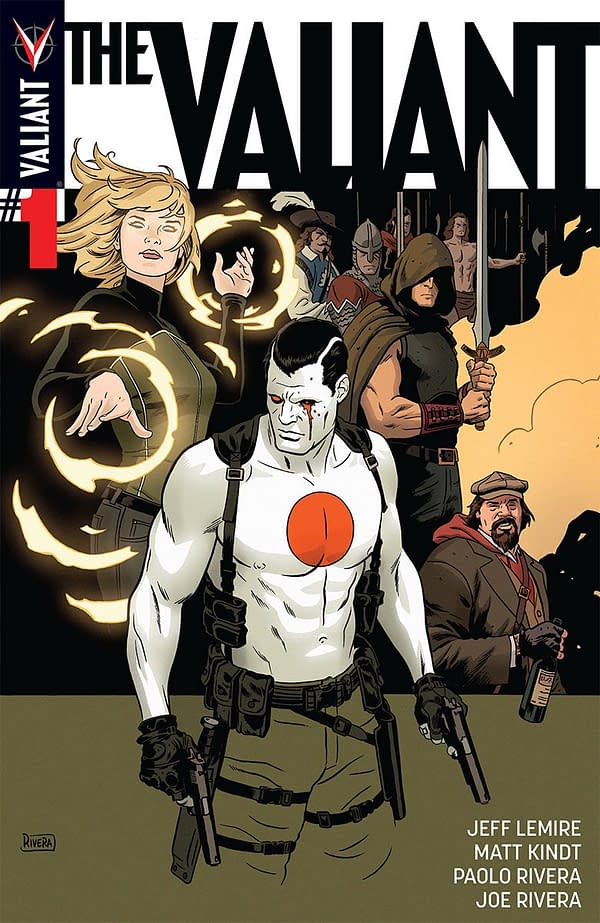
Aspects of these characters have been explored, of course, but never adequately zeroed-in on. We first met Gilad in the pages of Archer and Armstrong, and then he got his own series written by Greg Pak. The transition between these two stories was pretty jarring. Gilad and The Geomancer's initial appearance in Archer and Armstrong skewed toward the comedic (like everything else in that title), but the characters and the concepts themselves were never played as jokes. The humor in that story came largely from Gilad's contrast to the titular duo. Where Archer and Armstrong were in over their heads at every turn, Gilad was frighteningly competent in a 90s James Cameron hero kind of way. Moreover, we got a portrait of a man driven by this extreme sense of duty to the line of the Geomancers, those who speak for the Earth.
And then Pak's series, which turned out to not be long for this world, changed all that. Pak took on a Gilad who was fed up with serving the Earth, but was being called back to service by his Immortal daughter. It was the kind of story that would have worked a few years into an Eternal Warrior title, but as the first story in Gilad's solo title, it wasn't the best place to start. The problem wasn't that Pak's take was bad, per se (it was, in fact, quite a good comic, especially in its second arc), but poorly timed. I think the publisher recognized this and put the series on hiatus in order to get one of their better characters on track.
It appears that, with The Valiant, the publisher has commissioned a series that's interested in exploring the core aspects of this character in a serious way while further folding him into the Valiant Universe. The prologue section, which provides an origin story for Gilad's badass scars, is expertly handled and provides just the backbone that this character has needed ever since Valiant returned to the scene. Kindt and Lemire's script casts Gilad as a not only a great fighter, but as a constantly tragic figure doomed to witness the fall of civilization at the hands of a mysterious and horrific eternal enemy.
This foe takes the shape of whatever the culture that it's destroying fears, and these shapes are brought to startling life by Rivera. Particularly in the very first scene, where Gilad finds himself defending a Mayan Geomancer, we get a sense of just how horrible this creature is. It not only is driven by entropy to destroy, but it takes a sick sort of glee in doing so. This, combined with the emotional openness that Gilad shows toward his charges, keeps the stakes immediate and personal instead of feeling metaphysically distant. By the time we get to Rivera's absolutely stunning double page title splash, we're off to the races in terms of stakes.
From there, the story takes a few predictable turns. This is Gilad's story, but it involves the Valiant Universe, so we do a lot of jumping around as the eternal enemy starts to rear its head. The Valiant is certainly very well executed, but we're not reinventing the wheel here. An ancient evil is awakening to consume our civilization (a timely fear, to be sure) but this time there are superheroes. From here, it seems that the plot trajectory for this series is pretty clearly drawn. And that's a good thing, as sometimes you just can't beat the standards, and the grasp of character and form the The Valiant displays cannot be ignored.
D.S. Randlett lives in the hills of Virginia and takes credit for the reviews that his emaciated twin brother writes while chained to the old radiator. He plays his guitar while biding his time for unsuspecting tourists and thinking about going to grad school.
Eternal #1 (Boom!, $3.99)
By Cat Taylor
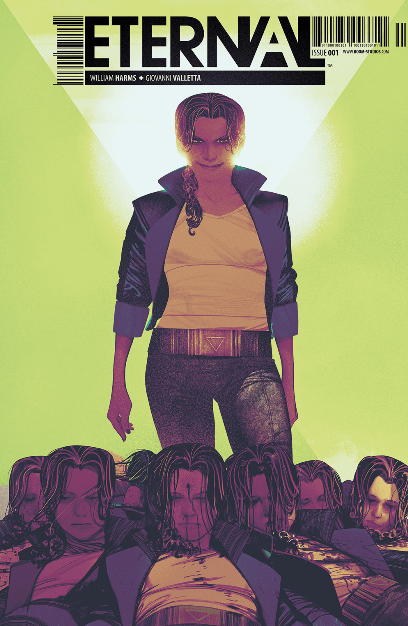
Eternal is a new limited series that not only explores a future reality where people can live forever, but also a totalitarian government that needs "pure" humans to continue their medical advancements. This need results in a government-run concentration camp for the "pures" and the inevitable resistance group of rebels. The first issue of this series doesn't provide much detail about what distinguishes a "pure" from other people but apparently most of the human population has been genetically modified to live forever and the genetic modification to do so is only possible by using the DNA of the "pures", who are still mortal.
As anyone who has read or watched stories about immortality knows, there are so many ways that writers have presented the concept of eternal life that it's almost a genre of its own. In Eternal, the method is through cloning and consciousness transfer. It's a method I've previously seen in Star Wars: Dark Empire, Dollhouse, and even on a Simpsons: Treehouse of Horror special. Despite the seemingly popular usage, the concept still holds an enormous amount of storytelling possibilities. One new element that Eternal's writer, William Harms brings to his tale is the trend of "death parties," where groups of people kill themselves as a part of group celebrations because, why not? Their consciouses will just be transferred to their awaiting clone bodies anyway.
Upon first read, the "death party" element struck me as unbelievable. Even if people could live forever, I didn't buy that they would go through the fear and pain of killing themselves. However, on second thought I realized that if there were no permanent consequences then it would be the next logical step in an adrenaline-rush, and that natural evolution would likely erode the survival instinct that makes it difficult for most people to commit suicide. Even in the real world people subject themselves to fear and pain regularly for excitement. A lot of our entertainment is based on some level of danger, and activities like boxing and football hurt, but people enjoy them anyway. Regardless, the "death parties" are only a small background element in the story so far. They're used more for "flavor" or world-building than as a major plot point. The main plot is the focus on oppressive governmental control and enforcement of their immortality program versus the struggle of the "pures" to escape from fascistic control of their lives.
The competent script by Harms is delivered effectively through the art of Giovanni Valletta. Valletta has a style that can best be described as retro. I was reminded a lot of the dramatic comic strips, like Steve Canyon, from the daily newspaper my parents bought when I was a kid. Valletta exhibits a great ability to portray action on a page as well as a skill at illustrating with "comic book realism" that was popular in the 1980s. He's a virtual unknown in the comic book world at this point but his style is accessible, competent, and somehow unique enough that I expect he'll be a well-known comic book artist in the near future. Also, Eternal is a comic that allows the colorist, Adam Metcalfe, to stretch his wings. Since writing comic book reviews, I've noticed and increasing trend of colorists becoming a more distinct and important part of the artwork. Until recently, colors in most comic books were pretty flat and mostly dealt with only primary colors. Now, it seems that colorists like Metcalfe have been expanding the palette of hues in comic stories and especially focusing on how the light of the atmosphere affects the tones of those colors, and even using colors to express moods as much as the pencils and inks do. Also, I realized that his work looked familiar because I previously raved about Metcalfe's colors when I reviewed a few issues of Translucid.
Ultimately, a comic book like Eternal, isn't just about providing action and entertainment. There is also some major social commentary on what the writer sees as potential dangers of living forever and an increasing level of government control on the population. I definitely believe there are a number of pros and cons to explore when it comes to the possibility of immortality, and I am interested to see what else Harms has to say about it. Of all the comics I've read so far on the subject, I've personally found Healed to be the most thought-provoking and intellectually stimulating. While it will be tough to catch up to Healed on that level, Eternal has Healed beat in spades when it comes to action and artwork. It typically takes both action and social commentary to tell an extraordinary comic book story and Harms has already established both aspects in the first issue. As a result, this is a really good start and indicates that the rest of the series has tremendous potential. This is one that is definitely worth giving a chance.
Cat Taylor has been reading comics since the 1970s. Some of his favorite writers are Alan Moore, Neil Gaiman, Peter Bagge, and Kurt Busiek. Prior to writing about comics, Taylor performed in punk rock bands and on the outlaw professional wrestling circuit. During that time he also wrote for music and pro wrestling fanzines. In addition to writing about comics, Taylor tries to be funny by writing fast food fish sandwich reviews for Brophisticate.com. His favorite quote of the week is a classic from Jerry Lawler, "I'm going to hit you so many times that you'll need a calculator to figure it out!" You can e-mail Cat at cizattaylor@hotmail.com.
The Superior Foes of Spider-Man #17 (Marvel, $3.99)
By Jeb D.
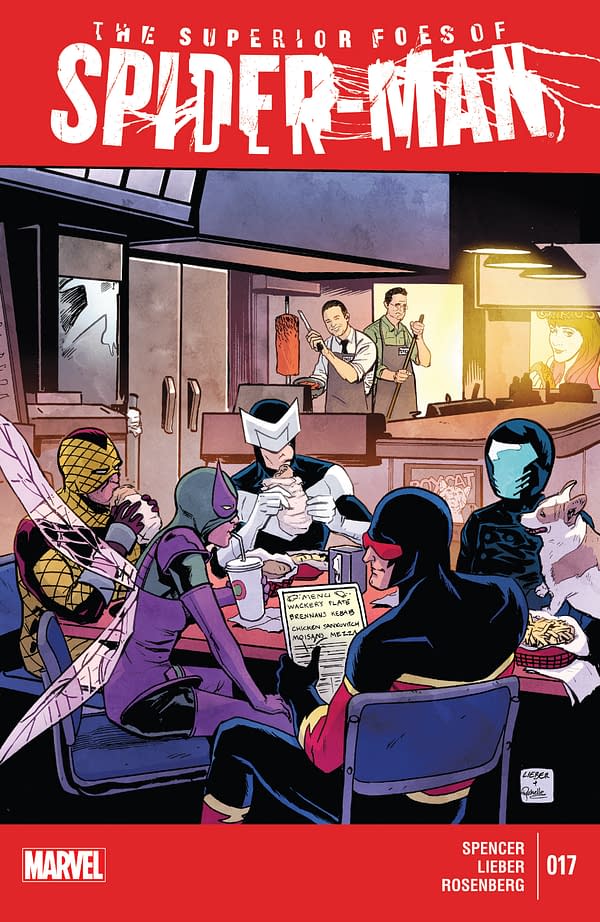
I'm fairly certain I read that the initial Superior Foes pitch had been for a 12-issue miniseries, with Marvel eventually upping the order, but I wonder if that had more to do with keeping the creative team happy than actual sales. Mind, I have no doubt that Marvel would have let Nick Spencer and Steve Lieber continue with their mashup of Sinister Six, Ocean's 11 and Justified on into the future if the numbers had been there, but making a play for a mass audience is tricky in the world of Big 2 comics: their "mass" audience is mostly composed of older collectors who are more invested in long runs of established characters than niche properties. Catching the fancy of the comics reader outside that group probably works best with more fantasy-oriented books (Journey Into Mystery's huge presence on media like tumblr probably had a lot to do with it surviving as long as it did), not low-life urban heists. It probably didn't help that it borrowed the name of one of the more controversial Spidey events in recent memory: though Superior Spider-Man came to be accepted (if sometimes grudgingly) as some of Dan Slott's best web-spinning work, at the time of Superior Foes' initial solicitation, it just seemed impossibly cheesy; that can't have helped it gain a commercial foothold.
Still, it's always nice to see a book go out on its own terms (the days of mid-storyline cancellations seem to have been replaced by the era of endless reboots and renumberings), though the wrap-up nature of issue #17 of Superior Foes is mildly disappointing. An entire comic devoted to Fred (Boomerang) Myers carefully laying out all the clues and misdirection of the previous 16 issues is somewhat satisfying intellectually, but of necessity comes up a bit short on the wry humor and Elmore Leonard-style lowlife assholism that marked the series up to now. Fred's internal monolog is still delightful, but it would be nice to finish up the other characters' stories with more than a wave and a finger from the guy that conned them all. After a few bumpy fill-in issues in the middle of the series, Steve Lieber made it back to complete the final run on the book, and no offense to folks like Rich Ellis or Carmen Carnero, but this is how the series had to conclude: the various payoffs from previous issues are ingeniously depicted, and great visual jokes abound. Colorist Rachelle Rosenberg continues to underline the humor beautifully (I don't really follow baseball, but they tell me her palette includes an in-joke for Mets fans).
I certainly look forward to seeing what the Spencer-Lieber team has cooked up for their Image book, but there was something uniquely transgressive about their loving pisstake on these Marvel baddies: sometimes, watching creators color outside the established lines is more fun than watching them draw up the lines in the first place.
Jeb D.'s been in the hospital and is a bit behind in his reading.










